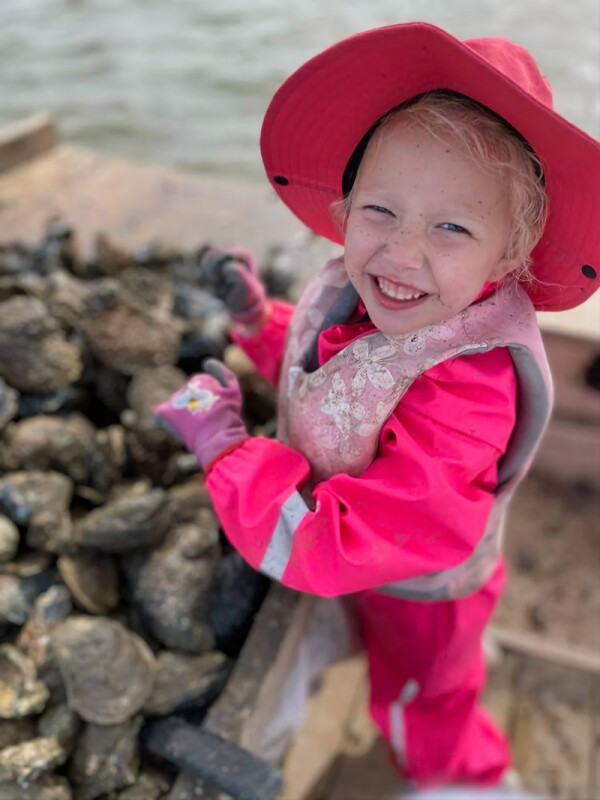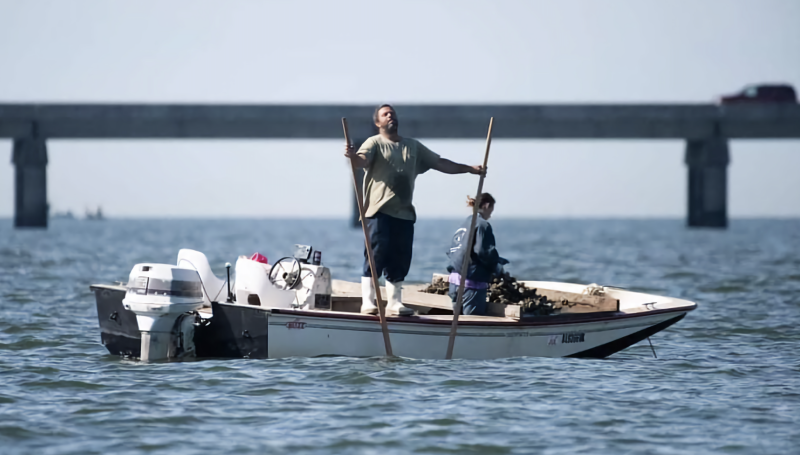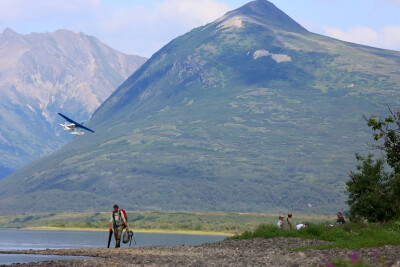Alabama oyster harvesters are glad to see their resource rebounding, even for a short season.
Robbie Pollock married into the oyster business 43 years ago. “My wife’s daddy, Doody Peters, was the king of the oyster business back then,” says Pollock. “Back then, you couldn’t get into the business if you didn’t have a name that was known.”
As teenagers, Pollock and his wife Holley ventured as far as Louisiana to tong and dredge for oysters. “I did all that,” says Pollock. “But the price of a non-resident license in Louisiana is over $1,000 now. I figured out that making $30 close to home is the same as making $100 in Louisiana.”
Pollock mostly tongs for oysters in Mississippi Sound. “Our house is right on the bayou. We can run four and a half miles down to where the oysters are. We work the waters inside the islands as far as Louisiana,” he says.
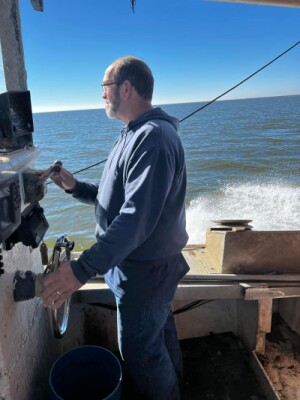
According to a spokesperson for the Alabama Marine Resources Division, the price of an oyster license in Alabama is $34 for tonging, and $34 for dredging. “We have a reciprocal agreement with the Gulf States, so we charge whatever they charge,” says the Marine Resources spokesperson. “Mississippi charges $120 for a non-resident license, and another $114 for a dredge permit, so that’s what we charge them. Louisiana is high, $1275 for the non-resident license and $221 for the dredge.”
At 60 years old, Pollock has seen a lot of changes in the fishery. “It was year-round when we come up,” he says. “Now we get about three months. We have a meeting coming up on the 24th to set the season. I’m hoping they open it later in October. The water’s too warm. If they open it in early October, the oysters won’t be as good.”
When the season opens Pollock is joined by his wife, Holley. “She’ll come out with me and get the limit, then we’ll switch boats and get her limit. My daughter Melissa, we call her Missy, will come with me sometimes or go with her husband. My son has a skiff, and he goes. They have five kids between them and they’re all coming up in the business.”
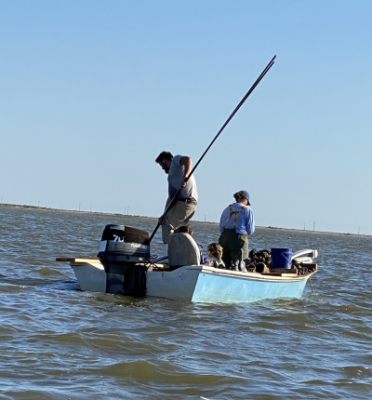
In good times, Pollock reports that he can get his limit - six 85-pound sacks - in less than two hours. Once a bed has been worked, the oysters come a little harder. “Later in the season, it can take two or three hours,” he says.
Pollock notes that the state has started adding granite gravel to the beds. “The oysters grow better on that than on shell,” he says. “On shell, they tend to take the shape of the shell, but on that ¾ to 1-inch granite, they tend to grow in a more natural shape, about four inches long.”
Pollock and the other oyster tongers have to clean the gravel off the oysters or they could be fined. “They call them unculled oysters, and they can’t be any more than 10 percent of what you’ve got.”
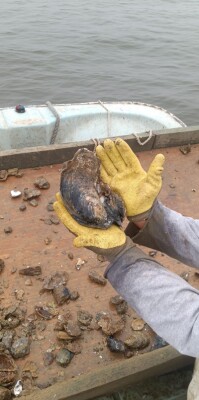
Pollock tongs from an 18-foot McKee Craft skiff. “It’s kind of tri-hull like a Boston Whaler. We work from the deck, sort of catwalk around the boat, like the Floyd skiffs. I had one of them, a great boat, but wood takes more maintenance. Fiberglass, you can leave it in the yard 20 years and then put it in the water.” Pollock keeps a stable of used 70-hp, two-cycle Evinrudes to bolt onto his skiff. “We used to use some inboard, but they can take up a lot of room. I can get one of these Evinrudes for $300 or $400 and run it for a few years.”
Tonging for oysters and tossing 85-pound sacks of oysters around takes muscle. “We mostly use 14-foot tongs,” says Pollock. “We like to work best in 8 or 9 feet of water. And them sacks, each one of them is a hundred-dollar bill, so we don’t mind lifting them. We’re happy to have any season at all. We thought the oysters were gone; it was bad for about ten years. Then around 2018, they started coming back.”
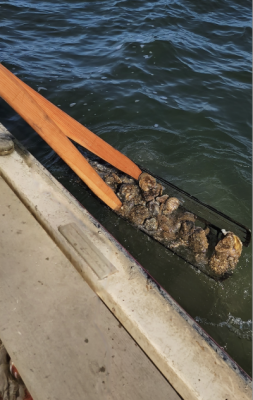
Craig Newton is the oyster man at the Alabama Marine Resources Division, in charge of the reefs. “There’s really only one reef that’s come back strong,” he says. “That’s the one west of the Dauphin Island Bridge. But we’re still only landing about 25 percent of what we were landing before Katrina.”
According to Newton, the near demise of the resource was mainly a factor of a lack of dissolved oxygen and other environmental factors. “We started to get the water cleaned up and oxygen levels came up and we started seeing more oysters.” He notes, however that they are not seeing a promising set of spat. “So, we don’t know what the future holds.”
For Robbie Pollock the future looks a little more relaxed. “When we’re not oystering, my son and I haul 400 crab traps a day. We look forward to oyster season because it gives us a chance to take the traps out of the water and get our gear organized. But really, I think in a few years I’d like to not go as hard, just get a boat and fish fewer traps.”
